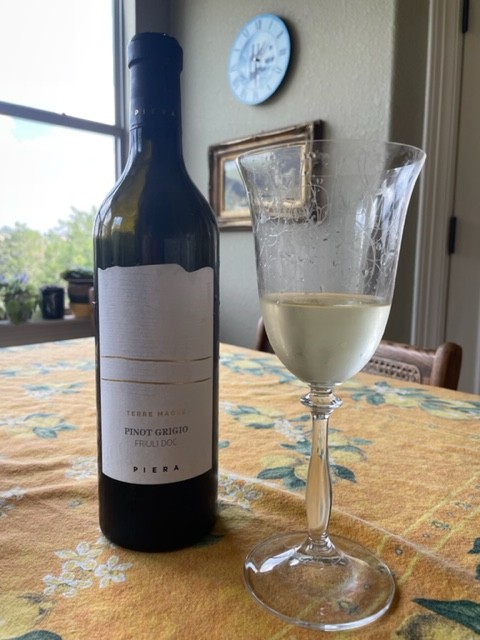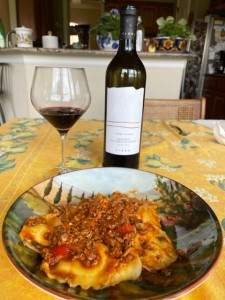by Neil Duarte
In 1992 Piera Martellozzo was tasked by her father to assume direction of a small wine estate in Padua Province of Friuli Venezia Giulia (better known as simply Friuli), and began the growth process of what is today Piera 1899, a winery that produces 1.2 million bottles per year. In the process Ms. Martellozzo moved the winery to San Quirino in Pordenone Province. Today, Piera 1899 sources grapes from Friuli, the Veneto and Trentino to make its wines. The winery also brought back a number of local Friuli grapes that were fast disappearing including Ribolla Gialla and Refosco which we will taste in this article. Piera 1899 believes that its location in Friuli provides access to 20,000 hectares of grapes grown under the temperature protection of the nearby mountains (1246 hours of sun each year) and aided by the sea breezes off the Adriatic. Not surprisingly, Piera 1899 is committed to quality in its wines.
Once again Wellcom Marketing arranged for me to participate in a Zoom tasting. In this one, wine writers tasted two of Piera 1899’s lines, CLÂR DE LUNE and Terre Magre. Both of these lines feature grapes from the Friuli Grave area of the province. The tasting was hosted by Massimiliano Masi, Production Manager of Piera 1899 (the son of Ms. Martellozzo), and Anna Polon, the Marketing and Communications Manager.
The first wine we tasted was CLÂR DE LUNE 2021 Prosecco DOC Rosé Brut, a 12% alcohol blend of 87% Glera and 13% Pinot Nero grapes. The grapes were initially fermented separately. Pinot Nero had malolactic fermentation on the skins at 22°C while the Glera had a light press and fermentation with yeasts at 15-16°C. Second fermentation was by the Charmat method in stainless steel tanks for 120 days. The resultant wine was a pale straw color with a light nose that finished fresh with a higher alcohol and acidity. I rated this low sugar offering (<1%) a 90. It should be served at 6-8°C. Our second and last CLÂR DE LUNE was a 2021 Friuli DOC Grave Rosato, a 13% alcohol blend of various late harvest reds including Refosco grapes. The Rosato had a light maceration on the skins with natural fermentation in small tanks. Aging was in stainless steel tanks with the lees and then a short period in the bottle. The Rosato had a very pale pink color with a fruit nose. It finished very smooth with nice minerality and acidity. I rated this low sugar, non-filtered wine a 91.
Next we moved to the Terre Magre line, beginning with the white wines. Our first wine was a 2021 Sauvignon Friuli DOC, a 13% alcohol offering made with 100% Sauvignon Blanc grapes. The grapes were light pressed and cold fermented for 24 hours, and then fermentation was continued at controlled temperatures of 17°-18°C. After this, the wine rested for 6 months to optimize its aromatic composition. The resultant Sauvignon was pale straw in color with a light nose. It finished clear, dry and very smooth with a light fruit taste. I rated this non-filtered wine a 92. It should be served at 8°C-10°C.
 The second white was a 2021 Ribolla Gialla Venezia Giulia IGT, a 13% alcohol offering made from 100% Ribolla Gialla grapes. These grapes were hand picked and then lightly pressed. Natural fermentation on wild yeasts followed for 15 days at controlled temperatures. The wine then rested for 8 months to optimize its aromatic composition. The Ribolla Gialla was a very pale straw in color with a flower nose. It finished fresh, fruity, dry and very smooth. I rated this wine a 92. The Ribolla Gialla should be served at 6°-8°C.
The second white was a 2021 Ribolla Gialla Venezia Giulia IGT, a 13% alcohol offering made from 100% Ribolla Gialla grapes. These grapes were hand picked and then lightly pressed. Natural fermentation on wild yeasts followed for 15 days at controlled temperatures. The wine then rested for 8 months to optimize its aromatic composition. The Ribolla Gialla was a very pale straw in color with a flower nose. It finished fresh, fruity, dry and very smooth. I rated this wine a 92. The Ribolla Gialla should be served at 6°-8°C.
Our last white was a 2021 Pinot Grigio Friuli DOC, a 13% alcohol, 100% Pinot Grigio grape wine. The grapes were soft pressed and then fermented at controlled temperature of 17°-18°C. After this, the wines rested for 8 months at 12°-13°C to insure a more complex and mellow structure. The Pinot Grigio was a very pale straw color with a light fruit nose. It finished medium and smooth and I rated this wine a 90/91. It should be served at 8°-10°C.
Moving to red wines, our first was a 2021 Refosco dal Peduncolo Rosso Friuli DOC, a 13% alcohol offering made from 100% Refosco grapes. Fermentation on the skins was for 15-20 days. Alcoholic fermentation preceded malolactic fermentation in stainless steel tanks with natural aging for 6-8 months in oak tonneaux. The resulting wine was ruby in color with a spice nose. This non-filtered wine finished clean and medium long and tannic. I liked the Refosco and rated it a 93. It should be served at 16°-18°C.
The second red was a 2021 Pinot Nero Friuli DOC, a 13% alcohol, 100% Pinot Nero grape wine. The grapes were fermented on the skins for 20-25 days at controlled temperature of 26°-28°C. Malolactic fermentation was in stainless steel tanks followed by aging in oak tonneaux for 6-8 months. The resultant wine was light ruby in color with a lovely fruit nose. It finished medium long, smooth and tannic. I rated this nice medium red wine a 92/93. It should be served at 14°-16°C, a bit cooler than the Refosco.

A red Terre Magre wine. PHOTO: TERRY DUARTE.
Our last red was a 2021 Merlot Friuli DOC, a 14% alcohol, 100% Merlot grape wine. A part of the grapes were air dried for 60 days while the remainder was fermented in stainless steel tanks for 15 days. The two were blended after 3-4 months and the resultant wine was allowed to rest for 4-6 months. The Merlot was a dark ruby in color with a complex nose. The sugar content was 6-8%. It finished very smooth, tannic and long. I liked this wine and rated it a 93. It should be served at 16°-18°C.
As you can see from my ratings, I thought that the Piera 1899 wines were excellent and I highly recommend them.
Thanks to Massimiliano Masi and Anna Polon for the Zoom tasting.




